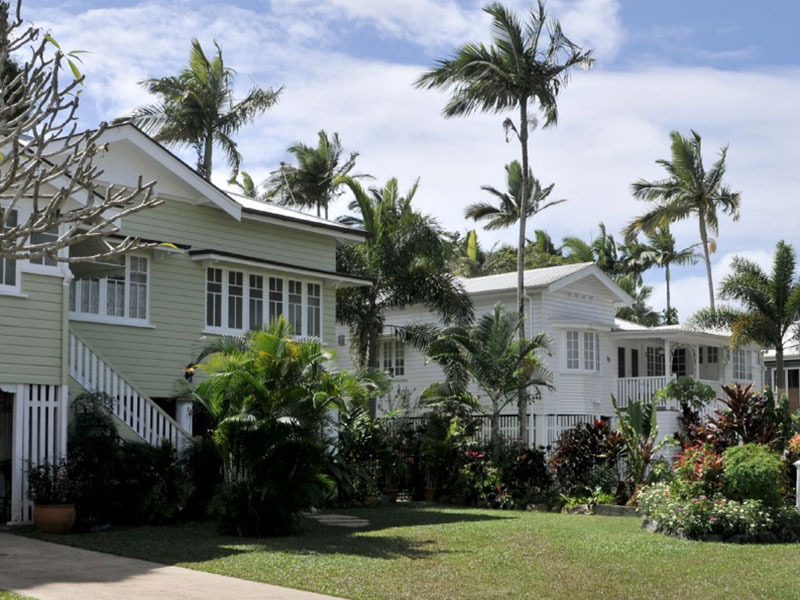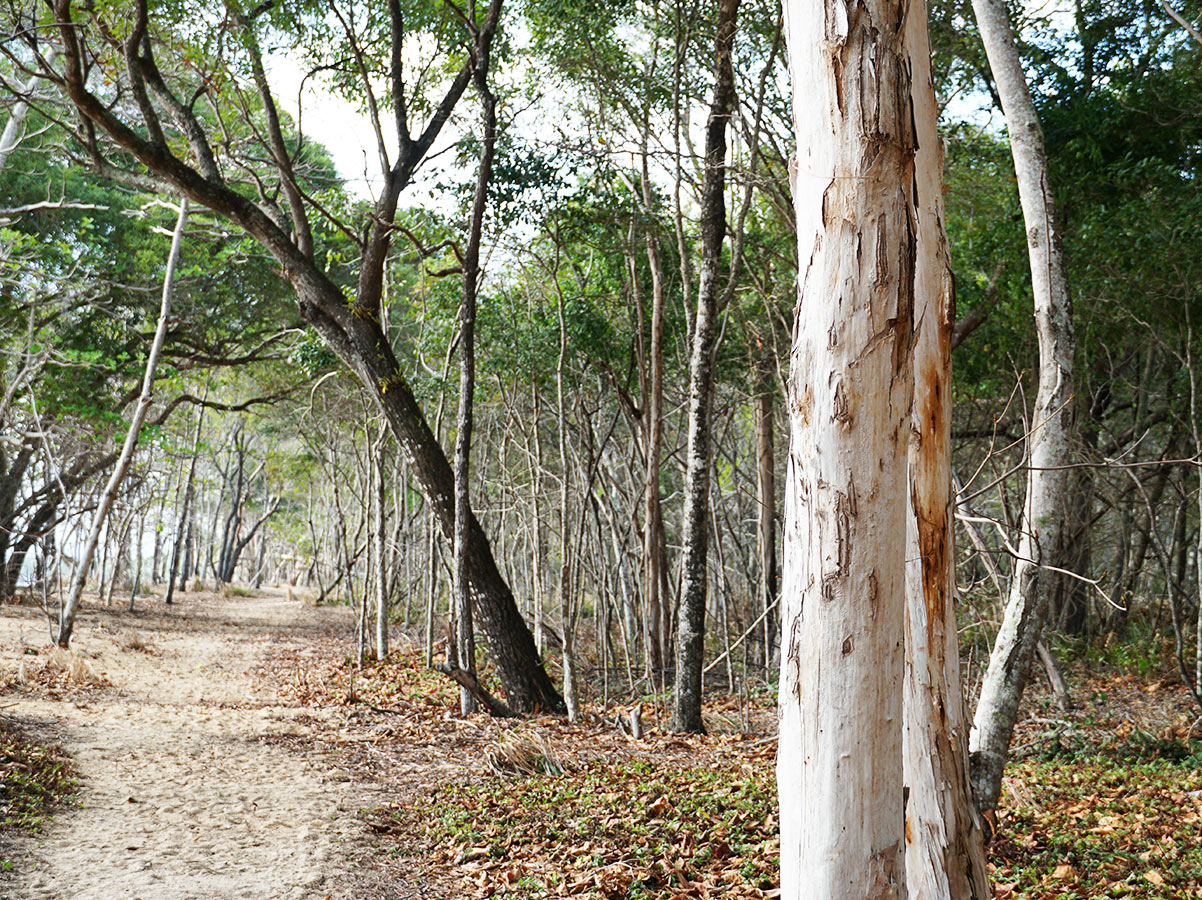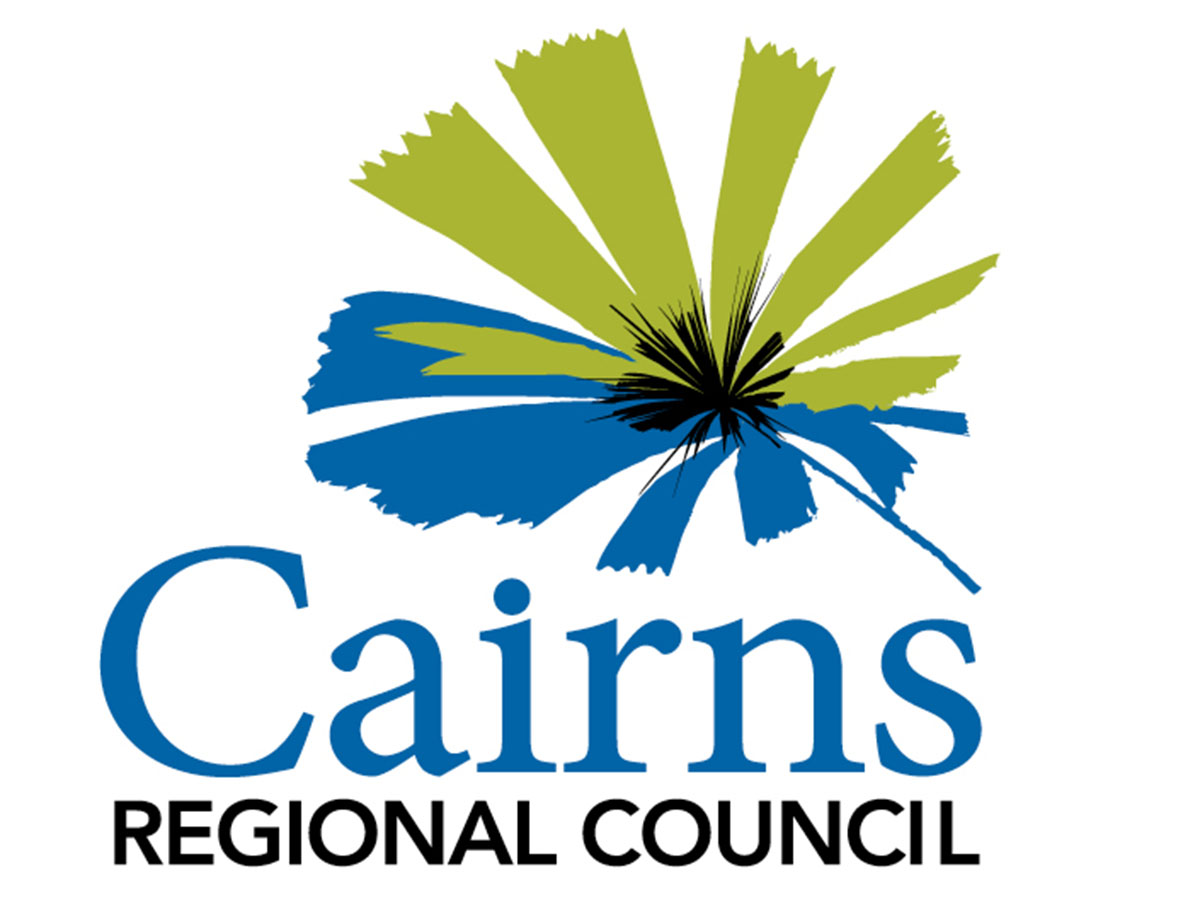Vegetation management on private land

Sustainability at home
Ditch single-use plastics, waste and fast fashion. Or increase biodiversity in your backyard. Find out how to live more sustainably.

TreePlotter database
We're trying to plot all of the street and park trees in the Cairns region. You can help too.

Trees & vegetation on property boundaries
Trees and other vegetation encroaching on neighbouring properties is a major cause of neighbourhood disputes.
Vegetation clearing on private property
A high percentage of trees and vegetation within the Cairns region is located on private land, and this vegetation forms an integral part of our urban forest.
If a property owner wishes to remove or damage any vegetation on their property, a Development Permit for Operational Works (Vegetation Clearing) may be required. Several checks need to be conducted before any vegetation can be removed from private property:
- the type of vegetation;
- location of the vegetation;
- the zone in which the subject lot is located;
- whether the vegetation on the lot is contained within a development overlay area associated with vegetation clearing provisions as demonstrated within a Property Report;
- whether the proposal meets each of the Codes’ acceptable outcomes;
- whether a covenant or easement is registered that has specific conditions relating to vegetation management; and/or
- whether a development approval exists over the subject lot and conditions are in place for vegetation removal or retention.
See more information relating to submitting an Operational Works application for any assessable vegetation damage.
Management of trees within your property
Routine pruning and tree maintenance shall comply with the guidelines in Australian Standard AS4373: Pruning of amenity trees. This Standard aims to provide Arborists, tree workers, government departments, property owners, and contractors with a guide defining uniform tree pruning procedures and practices to minimise the adverse impact of pruning trees.
Council recommends that a certified arborist undertake any tree management.
You can undertake the following tree management without Council approval:
- removal of deadwood
- removal of hazardous limbs
- crown lifting
- formative pruning
- selective pruning
- crown thinning
- remedial or restorative pruning
- removal of environmental and declared weed species
- removal of regrowth associated with the maintenance of existing pasture, cultivated fields, firebreaks, lawn or garden areas, and boundary fence lines
- pruning to avoid or prevent damage to above-ground services.
Other activities that may damage protected vegetation may need Council approval.
Dangerous trees
If you are concerned about a tree on your property, a qualified Arborist can determine whether the tree should be retained, pruned or removed. They will examine the following:
- the species and its known characteristics
- the health and structural integrity of the tree
- the height and proximity of the tree to dwellings and structures
- how frequently people are around the tree
- wind loading and predominant wind patterns
- drainage conditions around the root zone
- past limb failures and pruning work
- encroachment within the Tree Protection Zone (TPZ)
- social and amenity considerations
- the significance of the tree to the surrounding area
Council approval is required to remove dangerous vegetation unless it is necessary to remove or reduce an imminent risk of serious personal injury or damage to infrastructure posed by the vegetation as determined by a suitably qualified person such as an Arborist. In this instance, the Council must provide reporting and photographs to justify the removal without development approval. A suitably qualified Arborist must undertake the removal. Removing a tree in anticipation of a limb falling does not constitute an emergency.
Vegetation disputes
The Cairns region’s tropical trees, rainforest and greenery, are a defining feature of the area, but they can also cause conflict. Disagreements about trees and vegetation crossing property boundaries majorly cause neighbourhood disputes.
Council’s planning scheme contains instruments (overlays) to protect vegetation from inappropriate damage, protect significant trees, and maintain, protect and enhance the region’s biodiversity, ecological values and habitat values. To find out if your property is affected by an overlay, refer to our planning scheme online mapping.
The Neighbourhood Disputes Resolution (Dividing Fences and Trees) Act 2011 allows residents to resolve neighbourhood disputes more efficiently. It also encourages residents to be good neighbours and resolve their disputes concerning trees and fences in a friendly and timely manner.
Common disputes include:
- Trees damaging fences
- Tree limbs overhanging fences
- Tree leaf litter falling into gutters
- Trees shading roof-top solar panels
Council does not have responsibility for enforcing the Act.
In neighbourhood disputes, the best approach is always to reach an amicable agreement.
Generally, liaising with your neighbour is better than using a third party. However, an objective mediator can assist neighbours in reaching a mutually agreed solution.
Mediators are available through the Dispute Resolution Centre or the Citizens Advice Bureau. Legal Action should be a last resort as it can be costly and tends to worsen neighbour relations.
Thousands of Queenslanders find themselves in a neighbourhood dispute about a tree or a fence every year. The Act outlines the rights and responsibilities of all parties involved. Under the Act, the proper care and maintenance of a tree will be the responsibility of the tree keeper. The Act provides greater choices for neighbours about trees affecting their property.
The Queensland Civil and Administrative Tribunal (QCAT) had jurisdiction to hear and decide any matter about a tree or a fence. QCAT provides the community with a more accessible, informal and responsive means of resolving neighbourhood disputes. QCAT provides a single tribunal through which the community can access justice.
This does not apply to trees situated on rural land, more than four hectares in size, or land owned by a Local Government that is used as a public park. It also excludes trees planted or maintained for specific purposes, such as for commercial purposes or as a condition of Development Approval.
The tree provisions apply to urban areas and cases where the land affected by a tree adjoins the neighbour’s property or where a road separates the lands.
If you need further information or assistance, the following agencies may be able to help.
- Dispute Resolution Centre (Mediation Service), 1800 671 680, www.justice.qld.gov.au
- Legal Aid Office, 4048 1133, www.legalaid.qld.gov.au
Last Updated: 19 April 2024
Latest News > All News
Queensland Budget delivers funding boost to Cairns water security
The Miles Government is strengthening water security for Cairns, using the recent state budget to increase funding toward the Cairns...
Council statement on recent media coverage
Council statement in response to recent media coverage on the appointment of the interim CEO....
Have your say on Cairns’ future aquatic facilities needs
Residents are being invited to provide their views on the future aquatic facility needs of the Cairns region....


